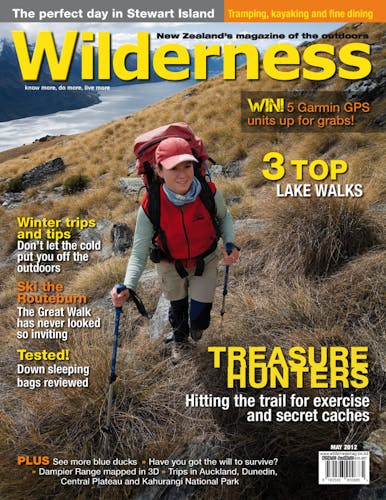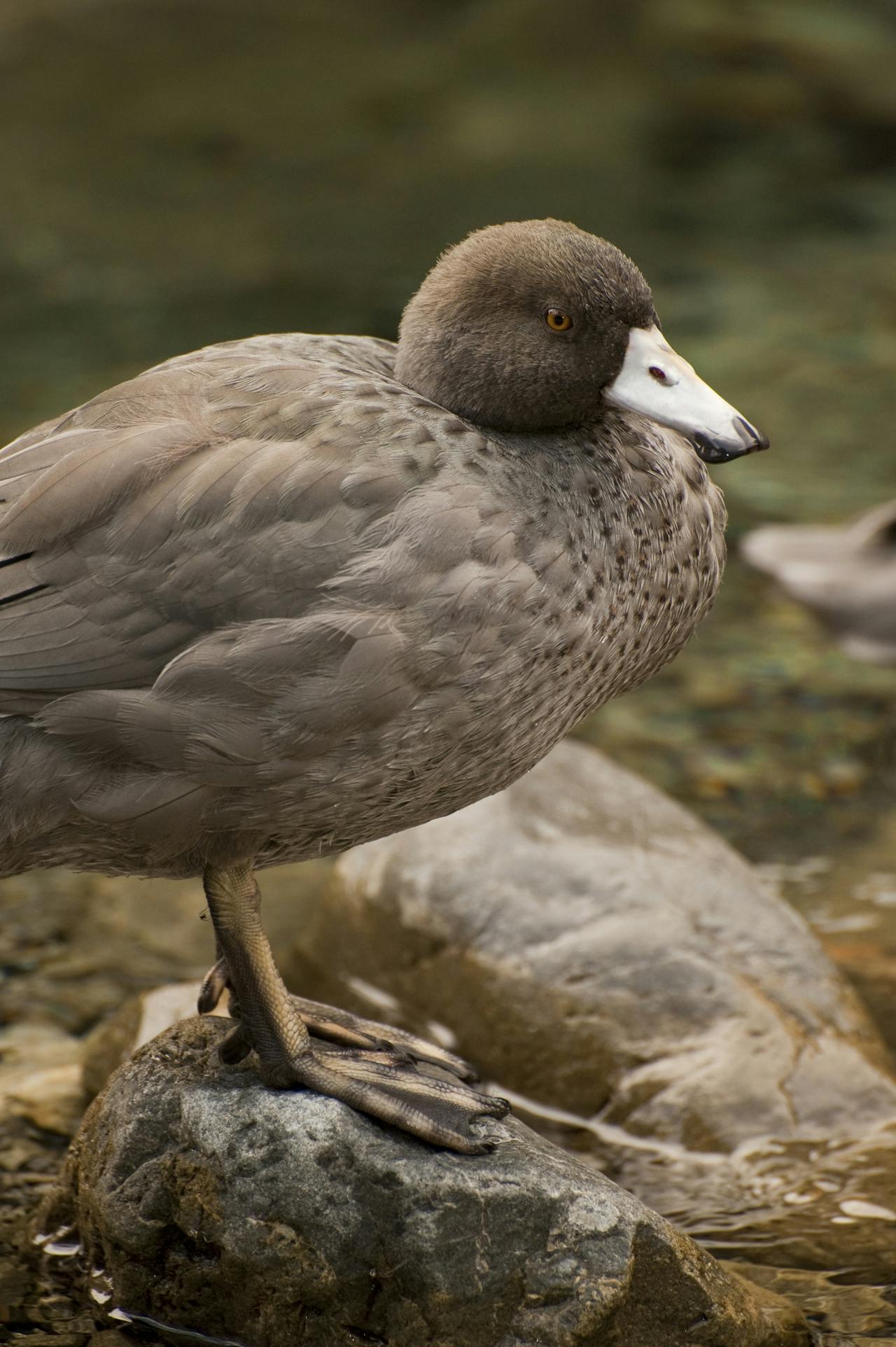Of all New Zealand’s native bird calls, it is perhaps the sharp whistle of a blue duck, or whio, that most thrills me. Early naturalist and conservationist Thomas Potts perhaps best summed up the experience: ‘Above the murmur comes a faint long whistle, in the turbulent pools that seethe and eddy around them, floats a small party of the blue mountain ducks…’.
Blue duck (Hymenolaimus malacorhynchus) is an apt description in some ways, but during dusk or on a dull day, the birds can morph into their surrounds like a ghost, their grey-blue plumage perfectly matching the hue of greywacke boulders. Then you have to watch out for the pale white of their distinctive beaks. Whio have curious black flaps on the end of the beaks, thought to provide protection against rough boulder surfaces when they feed.
Whio are one of only four species of torrent duck in the world, along with others from South America, Africa and New Guinea.
Early European and Maori explorers must have eaten a fair number of the birds. Starving explorer Alphonse Barrington almost sobbed when a rat stole the small duck he’d caught during his 1860s Olivine wanderings. When up the Karangarua River in 1894, explorer Arthur P Harper marvelled at the skill of whio. He watched one adult fake a broken wing to lead his dog downriver over a small waterfall. Predator fooled, the duck promptly flew off to protect its offspring upriver. The dog survived, and Harper’s ‘Lame Duck Flat’ still features on maps.
Although once more widespread on lowland lakes and rivers, in the face of habitat destruction and predation during European colonisation, blue ducks retreated to mountain streams. Not that they’re entirely safe there; stoats pose a serious risk to their ongoing survival. Unlike smaller forest birds, which find havens on offshore islands, whio need fast-flowing, sizeable rivers – habitat in short supply on islands. Efforts to stop their slide to extinction depend upon ongoing efforts on the mainland.
I’ve encountered whio on more than 90 occasions, dating back 20 years. The first occurred in the Ruahine’s Pohangina River. The most I’ve seen was 23 when rafting the Motu River, although 10 seen in one day’s tramp up the Urewera’s Tauranga River was rewarding, too. Witnessing an aerial dispute between two pairs at Top Toaroha also proved fascinating.
Dawn or dusk make good times to spot whio, when they’re often very active. Approach slowly and carefully, crawling if possible. If the birds seem unsettled, leave them alone.
Whirinaki River, Whirinaki Forest Park
Trampers walking in to the popular Central Whirinaki Hut have a good chance of spotting whio on the Whirinaki River during their travel. The 24-bunk hut is situated on a three-day Central Whirinaki-Mangamate loop track.
Flora Stream, Kahurangi National Park, Nelson
Over the last decade, the community group Friend of Flora have trapped the upper Flora Stream to help protect the area’s birdlife, including blue ducks. From Flora car park, it’s only a 30-minute tramp to Flora Hut, where the nearby river burbles on its descent into the Takaka Valley. Listen out for whio from here down.
Edwards River, Arthur’s Pass National Park
My best and most recent blue duck experience was a group of three whio just downstream of Edwards Hut. The normally shy birds, probably a pair with a juvenile, seemed completely unphased by our approach and stood there showing off like catwalk models. One even bumped its companion off a rock, seemingly so it could preen in front of my telephoto lens.








